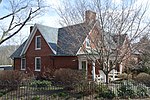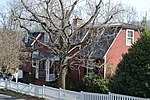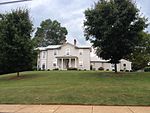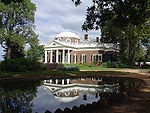Woolen Mills Village Historic District
Albemarle County, Virginia Registered Historic Place stubsCharlottesville, Virginia Registered Historic Place stubsGeography of Charlottesville, VirginiaHistoric American Buildings Survey in VirginiaHistoric districts in Albemarle County, Virginia ... and 5 more
Historic districts on the National Register of Historic Places in VirginiaNRHP infobox with nocatNational Register of Historic Places in Albemarle County, VirginiaNational Register of Historic Places in Charlottesville, VirginiaUse mdy dates from August 2023

Woolen Mills Village Historic District is a historic district that was listed on the National Register of Historic Places on April 12, 2010. The district is in Albemarle County, Virginia and also in Charlottesville, Virginia. Its area includes parts of Chesapeake, Franklin, Steephill, 18th NE, and East Market Streets and Riverside Avenue in the City of Charlottesville; and parts of Pireus Row and Marchant and East Market Streets in Albemarle County. The district includes Woolen Mills Chapel, previously listed on the National Register.
Excerpt from the Wikipedia article Woolen Mills Village Historic District (License: CC BY-SA 3.0, Authors, Images).Woolen Mills Village Historic District
East Market Street, Charlottesville
Geographical coordinates (GPS) Address Nearby Places Show on map
Geographical coordinates (GPS)
| Latitude | Longitude |
|---|---|
| N 38.021605555556 ° | E -78.456366666667 ° |
Address
East Market Street 1901
22902 Charlottesville
Virginia, United States
Open on Google Maps









